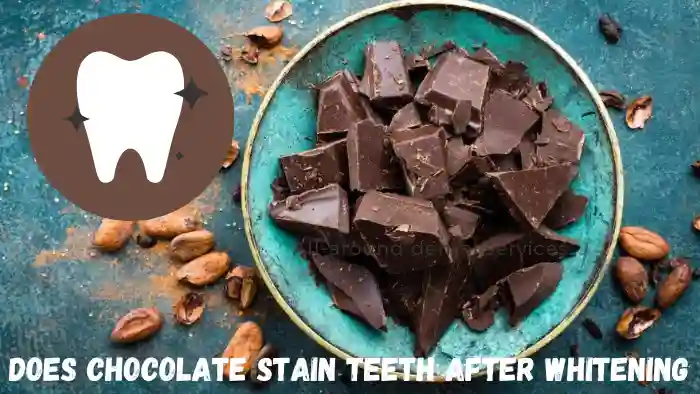Smoking can cause significant teeth staining, leaving them yellowed or brownish. This tooth discoloration is unsightly and can be challenging to remove. The good news is there are steps you can take to help prevent and reduce tooth staining if you are a smoker.
Causes of Tooth Staining from Smoking
When you smoke cigarettes, cigars, or pipes, the tobacco smoke introduces myriad chemicals to your mouth. Some of the key culprits that contribute to tooth staining include:
- Tar – The sticky brown substance in tobacco leaves a stubborn residue on teeth that can penetrate the microscopic grooves in enamel. This leads to stubborn superficial tooth stains.
- Nicotine – This addictive chemical found in tobacco can also cause accumulation of surface stains over time.
- Hydroquinone – Some cigarette papers contain this chemical that can alter the color of teeth.
- Abrasion – Ingredients in tobacco smoke have abrasive properties that wear away at the enamel surface. This erosion makes teeth more prone to deep staining.
As stains build up from continued smoking, teeth can become intensely discolored with a yellowish or brownish tone that is difficult to remove with regular brushing and flossing.
Preventive Oral Hygiene Habits
Practicing diligent oral hygiene is the first defense against tooth staining from smoking. Key habits include:
- Brush thoroughly twice a day – Using a soft-bristled toothbrush, brush for two minutes to help remove tobacco stains from all tooth surfaces.
- Floss daily – Flossing reaches areas between teeth that are brushing misses. It removes plaque that can lead to more stubborn staining.
- Rinse with mouthwash – Mouthwash can help remove stains and kill bacteria that cause plaque buildup. Opt for mouthwashes with ingredients like hydrogen peroxide or those designed to whiten.
- Clean your tongue: Use a tongue scraper or brush to remove microorganisms that could cause staining.
- Drink plenty of water – Water helps neutralize acids and clear away staining compounds from regular smoking and eating.
- Avoid darker foods/drinks – Beverages like coffee, tea, wine, and soda can exacerbate staining, so limit intake and frequency.
Following these best practices daily will help remove new surface stains before they worsen and minimize buildup over time.
Whitening Toothpaste and Mouth Rinses
Over-the-counter whitening toothpaste and mouthwashes can also help counteract and reduce tobacco staining between professional teeth cleanings. Look for the following effective ingredients:
Whitening Toothpaste
- Hydrogen peroxide – This safe whitening agent can lift surface stains from smoking. Higher concentrations, around 2%, are more effective.
- Baking soda is a natural abrasive to scrub away yellow tobacco stains without damaging enamel.
- Activated charcoal – Absorbs and removes stained compounds from tooth surfaces.
- Blue covariance – Optically bonds to teeth to make them appear whiter by offsetting yellow tones.
- Silica – Buffs away stain-causing film and residue from smoking.
Whitening Mouth Rinses
- Hydrogen peroxide – Whitening formulas like Listerine Healthy White can break up smoking stains.
- Cetylpyridinium chloride – Kills bacteria that lead to plaque and staining.
- Essential oils – Ingredients like menthol, eucalyptus, and peppermint oil can freshen breath.
- Alcohol – Rinses with higher alcohol concentrations produce better whitening results.
Using specialty whitening toothpaste twice daily and a daily whitening mouthwash provides extra help reversing tobacco tooth stains between dentist visits.
Professional Teeth Cleaning
While home care can help reduce staining, professional cleanings are critical for removing deep-set discoloration from smoking. Regular cleanings every six months allow the dentist to:
- Scale plaque, tar, and calculus that cause staining – Stubborn buildup not removed by brushing comes off with professional tools.
- Perform deep stain removal techniques – Your dentist has access to more aggressive methods like ultrasonic scaling and air polishing, which are unavailable at home.
- Apply surface treatments – Topical application of hydrogen peroxide, micro-abrasion, or laser stain removal directly breaks up staining compounds.
- Polish teeth – Special pastes smooth the enamel surface for stain resistance and brighter teeth.
The deep cleaning and whitening treatments possible through professional dental cleanings are essential to combating severe, engrained staining in smokers’ teeth. This keeps teeth looking cleaner between visits.
Dental Restorations
Dental restorations that cover the teeth may be required in cases of significant staining that does not improve from professional cleaning and whitening treatments. Options include:
Dental Bonding
- The composite resin material is sculpted over teeth to mask intrinsic stains from smoking and is often used for minor discoloration limited to one or two teeth.
Dental Veneers
- Thin porcelain or composite shells that adhere to the front of teeth to create a uniformly white smile. Veneers last 10-30 years.
Dental Crowns
- Envelope teeth entirely in porcelain, ceramic, or composite covers to block out dark tobacco stains. Crowns are permanent and durable.
These cosmetic dentistry solutions can create a new white smile for heavy smokers with pervasive, deep tooth discoloration.
Quitting Smoking
The most direct way to stop tobacco staining is by quitting smoking altogether. The health benefits are immense – not just for your teeth but your entire body. Talk to your doctor about leaving options like:
- Nicotine replacement therapy – Patches, gum, lozenges, sprays, and inhalers help ease withdrawal and cravings as you wean off nicotine.
- Prescription cessation medication – Drugs like varenicline (Chantix), bupropion (Zyban), and Nicotrol can reduce cravings and withdrawal symptoms.
- Behavioral counseling – Working with a therapist for cognitive behavioral therapy, motivational interviewing, and skills training can increase quit success.
- Support groups – In-person or online communities unite people quitting smoking for encouragement and accountability.
- Quitting cold turkey – Stopping smoking completely without aids works for some with sufficient willpower.
When tobacco use ceases, so too will new tooth staining. The preventive measures and whitening techniques outlined above can address any existing stains.
Conclusion
While smoking inevitably causes some degree of tooth staining over time due to the chemicals present, you can take many preventive steps to minimize discoloration. Focus on diligent brushing and flossing, use whitening toothpaste and mouthwashes daily, avoid dark beverages, get regular professional cleanings, and consider whitening treatments.
For heavy staining, cosmetic dentistry solutions may be required. Of course, quitting smoking altogether provides the most dramatic whitening effects. Keep a thorough daily oral hygiene regimen and regular dentist visits; your teeth can remain white and bright even if you smoke.
FAQs
Can teeth staining from smoking be completely reversed?
Unfortunately, complete reversal might not be possible, but following preventive measures can significantly improve the appearance of your teeth.
Are natural remedies as effective as professional whitening treatments?
Natural remedies can help to some extent, but professional treatments offer quicker and more noticeable results.
How often should I visit the dentist for cleanings if I smoke?
If you smoke, you should visit the dentist for cleanings every six months to maintain optimal oral health.
Can I whiten my teeth too often?
Yes, excessive whitening can lead to tooth sensitivity and enamel damage. Follow the product instructions and your dentist’s advice.
Will quitting smoking altogether remove existing stains?
Quitting smoking will halt the progression of staining, but it might not eliminate all existing stains. Professional treatments can help in such cases.
How soon after I quit smoking will my teeth get whiter?
Once you stop smoking, you should notice some whitening effects in the first 2 weeks as surface stains clear away. However, deeper smoking stains may take a few months to brighten fully. Dentist treatments speed up this process.
Does vaping stain teeth?
Yes, vaping can still introduce staining compounds and promote enamel erosions that lead to tooth discoloration over time. However, vaping generally causes less severe staining compared to traditional cigarette smoking.
Can you reverse tooth yellowing from smoking?
Surface-level yellowing and brownish discoloration from smoking can be reversed through diligent oral hygiene, whitening toothpaste and rinses, professional cleanings, and whitening treatments. Deep-set intrinsic stains are harder to remove fully.
What foods help whiten teeth from smoking stains?
Crunchy fruits and vegetables like apples, celery, and carrots can help mechanically scrub away staining. Dairy products like cheese, milk, and yogurt contain enamel-strengthening calcium and phosphate. Vitamin C-rich foods like citrus fruits, broccoli, and tomatoes help whiten.
How often should smokers get their teeth cleaned?
Smokers should aim to get professional teeth cleanings every 3-4 months. This allows more frequent deep cleaning to remove smoking stains before they become engrained and harder to remove. Cleanings every 6 months are usually sufficient for non-smokers.

A Blogger, Author and Researcher! Gohar Aalam is recognized as a full-time blogger for Health and Tech Niches. I’m a Fountainhead of Gethealthup.com, will provides high quality knowledge.








